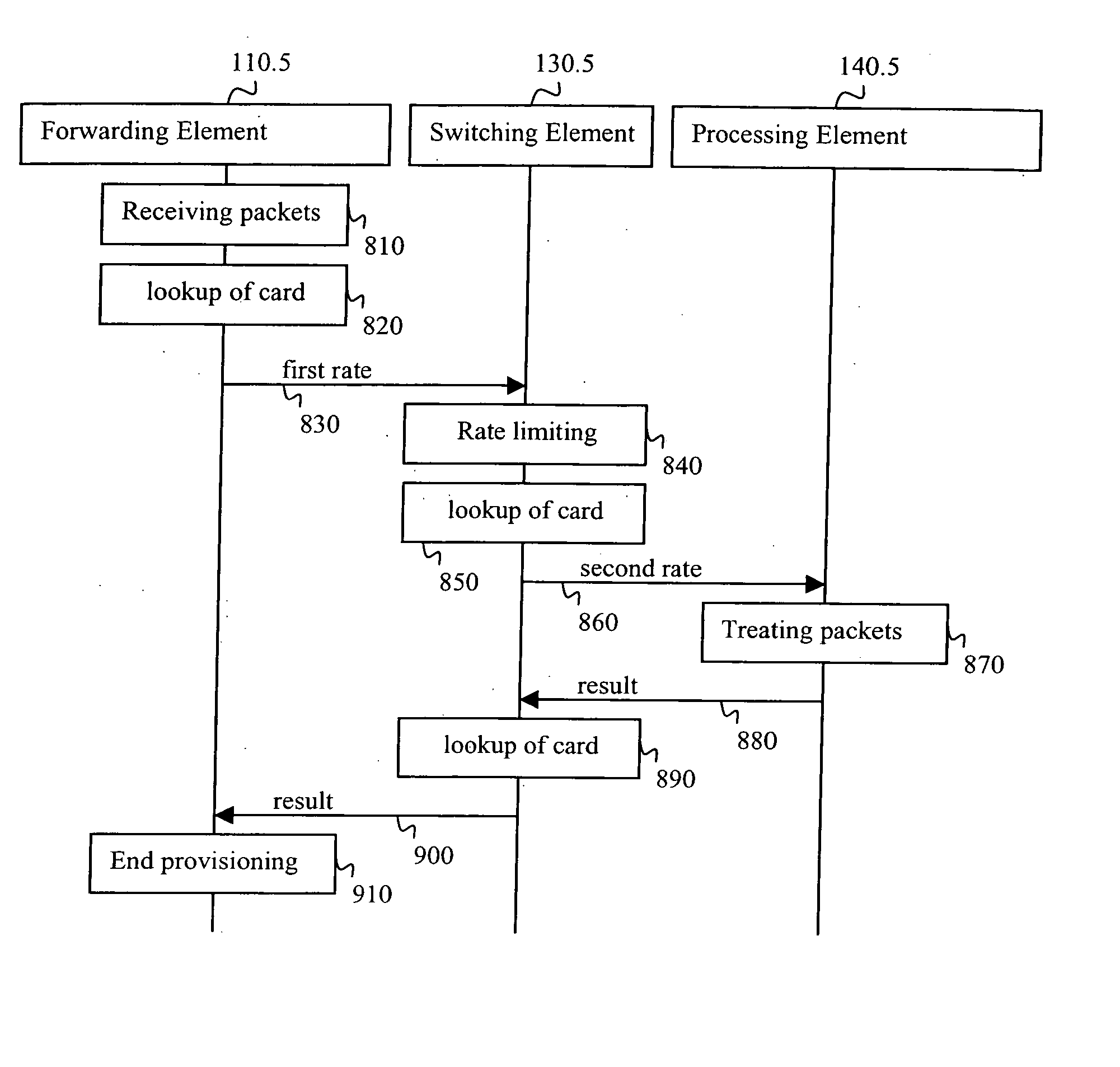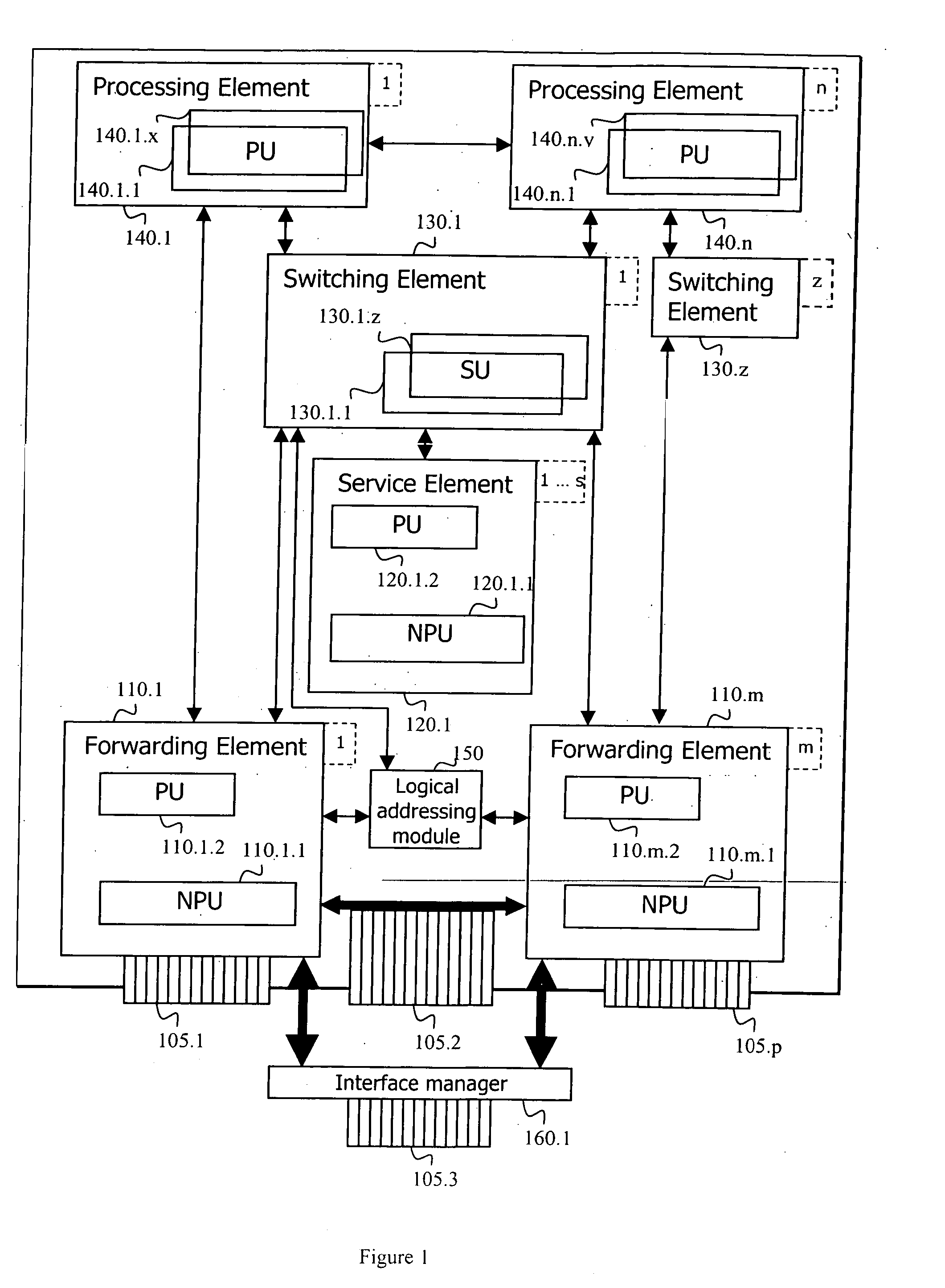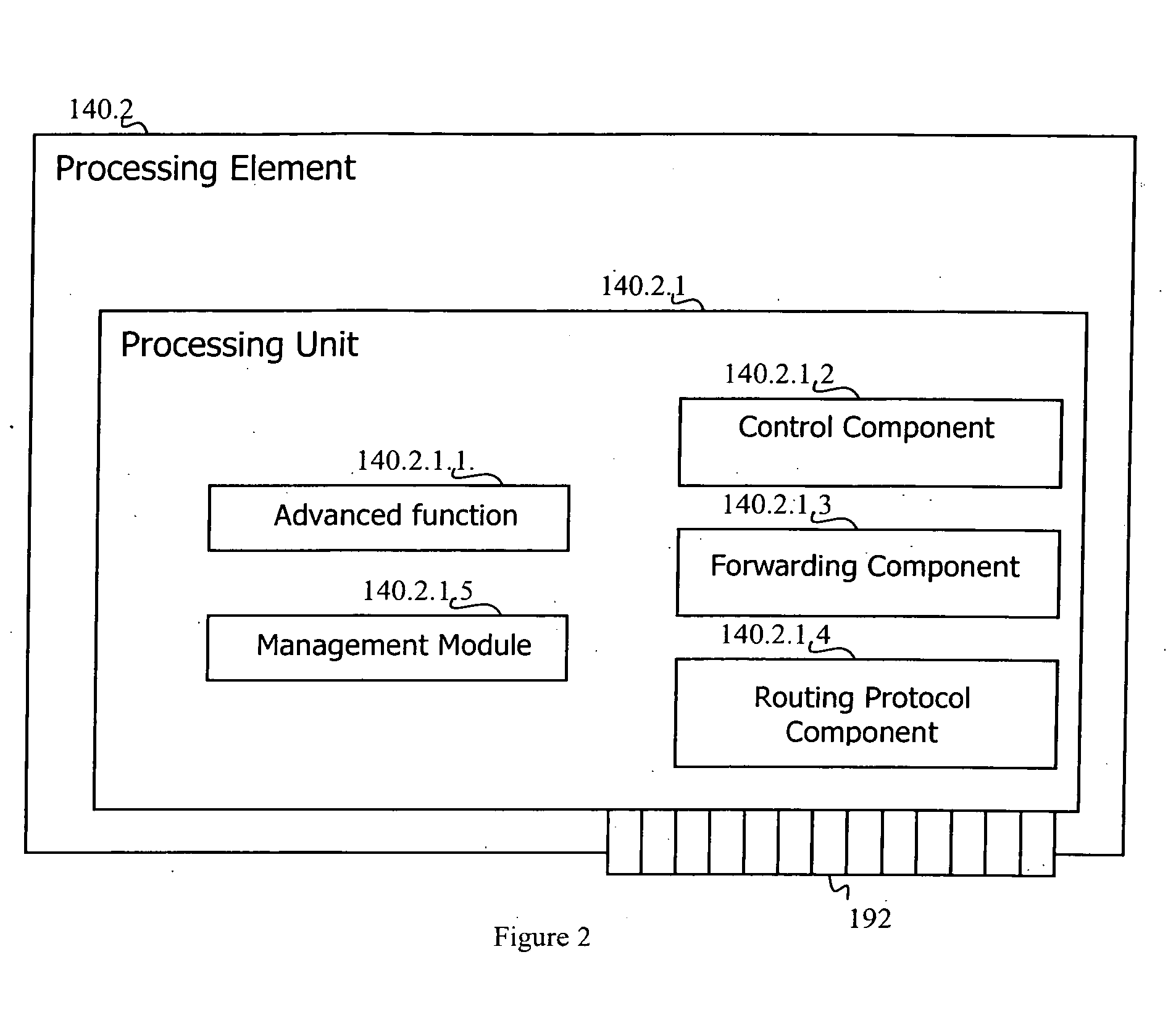Adaptive router architecture enabling efficient internal communication
a router and router technology, applied in the field of adaptive router architecture, can solve the problems of lack of open and programmable routers, design problems, and inability to meet the needs of internal communication, and achieve the effect of enabling efficient internal communication, and reducing the number of routers
- Summary
- Abstract
- Description
- Claims
- Application Information
AI Technical Summary
Benefits of technology
Problems solved by technology
Method used
Image
Examples
Embodiment Construction
[0024] The present invention presents at least five major improvements over the prior art solutions. A first improvement comes from the internal architecture of the router. The basic principle of this improvement is to split the responsibilities usually taken care by one entity in conventional routers over multiple simple components. For instance, a router architecture based on the present invention could have forwarding elements connected to the network interfaces of the router, processing elements connected to the forwarding elements through switching elements. The forwarding elements handle the tasks at high speed (e.g. wire speed of 10 Gigabit per second) and can delegate the tasks that are non-time critical to processing elements. The invention further suggests using switching elements to handle the transfer of information between the various elements of the router (e.g. between the forwarding elements and the processing elements). This enables an abstraction of the resources i...
PUM
 Login to View More
Login to View More Abstract
Description
Claims
Application Information
 Login to View More
Login to View More - R&D
- Intellectual Property
- Life Sciences
- Materials
- Tech Scout
- Unparalleled Data Quality
- Higher Quality Content
- 60% Fewer Hallucinations
Browse by: Latest US Patents, China's latest patents, Technical Efficacy Thesaurus, Application Domain, Technology Topic, Popular Technical Reports.
© 2025 PatSnap. All rights reserved.Legal|Privacy policy|Modern Slavery Act Transparency Statement|Sitemap|About US| Contact US: help@patsnap.com



